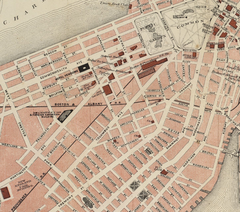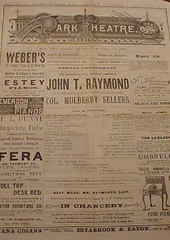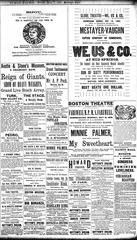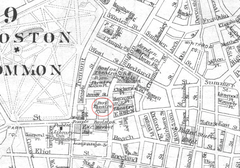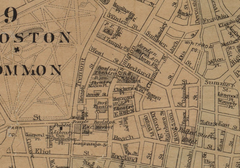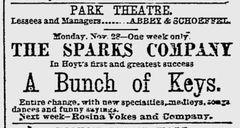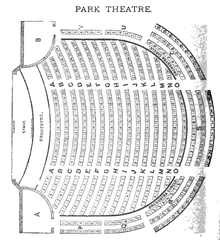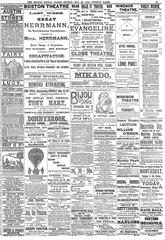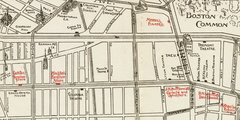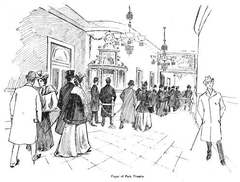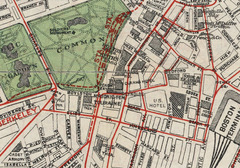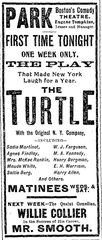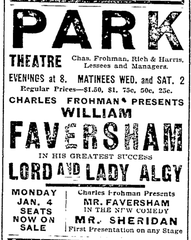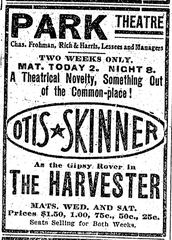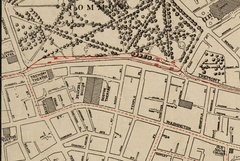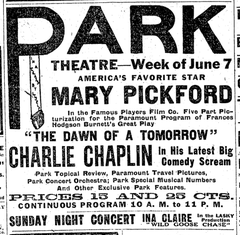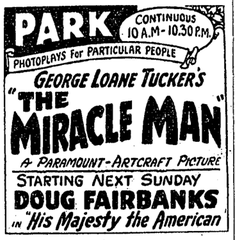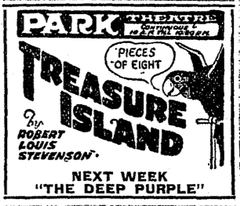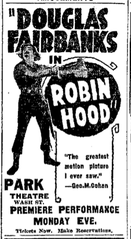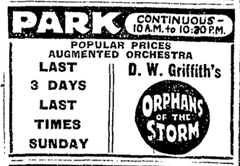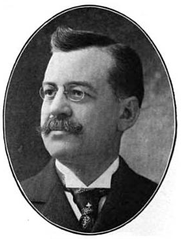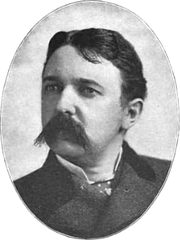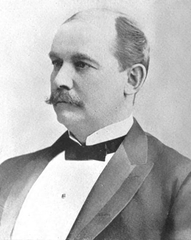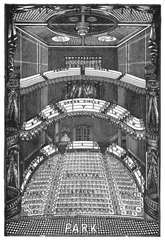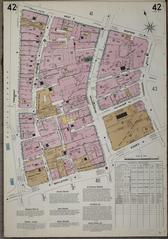
State Theatre Boston Visiting Hours, Tickets, and Historical Sites Guide
Date: 15/06/2025
Introduction
Nestled within Boston’s illustrious Theater District, the State Theatre stands as a testament to the city’s rich cultural and architectural heritage. With origins dating back to 1879, this historic venue has witnessed profound transformations—from its beginnings as the Park Theatre, a grand live performance space, to its evolution into a celebrated movie palace during the early 20th century under the vision of Adolph Zukor and architect Clarence H. Blackall. Its Italian Renaissance interior, ornate detailing, and architectural innovations embody the grandeur and opulence of early American theaters designed to captivate audiences (Cinema Treasures).
Although the State Theatre no longer operates as a performance venue, its legacy endures within Boston’s vibrant Theater District, a hub that has long fostered the city’s performing arts scene alongside landmarks like the Boston Opera House and Charles Playhouse (Broadway Boston). Today, visitors can appreciate the theater’s striking façade, immerse themselves in the district’s rich history through guided tours, and enjoy an array of cultural and historic attractions nearby.
This guide provides a detailed overview of the State Theatre’s storied past, architectural highlights, practical visitor information—including visiting hours and ticket guidance—accessibility, and nearby points of interest. Whether you are a history buff, architecture enthusiast, or traveler seeking to experience Boston’s artistic heartbeat, this report equips you with valuable insights and tips to enrich your visit.
Historical Overview
Origins and Early Years (1879–1912)
The State Theatre’s story begins in the late 19th century, reflecting Boston’s transformation into a cultural and entertainment hub. Originally opened as the Park Theatre in 1879, after the conversion of Beethoven Hall, it was strategically located at 617 Washington Street—now a focal point within the city’s Theater District. The original structure featured about 700 seats across two balconies and four ornate boxes, characteristic of grand playhouses of the era (Cinema Treasures).
The Park Theatre quickly established itself as a prominent venue for live performances, helping anchor the area’s reputation as a center for performing arts, alongside neighboring venues like the RKO Boston (Cinerama) (Broadway Boston).
Renovations and Shifting Identities (1889–1914)
In 1889, the Park Theatre underwent significant renovation, a testament to its popularity and the evolving tastes of Boston’s theatergoers. The late 19th and early 20th centuries saw a shift toward vaudeville, burlesque, and motion pictures (History of Boston). The theater adapted by adopting various names and formats, including Minsky’s Park Burlesque Theatre and the Hub Theatre.
By 1912, the Park Theatre had begun screening motion pictures, marking its transition from a purely live performance venue to one that embraced the burgeoning world of cinema.
Major Transformation: The Zukor Era and Italian Renaissance Revival (1914)
A pivotal turning point came in 1914 when Adolph Zukor, a pioneer in the American film industry, acquired the venue. Zukor initiated a comprehensive remodel: the original two balconies and stage boxes were removed, a larger balcony was added, and seating capacity increased to roughly 1,200. Architect Clarence H. Blackall re-envisioned the interior in the Italian Renaissance style, featuring ornate plasterwork, decorative columns, and lavish detailing (Cinema Treasures).
The theater reopened on December 7, 1914, with the premiere of “The Rose of the Rancho,” officially transitioning from traditional playhouse to modern movie palace.
Evolution Through the 20th Century
Throughout the 20th century, the theater changed names and operators—also known as Trans-Lux Theatre and State Theatre—and was managed by companies like Paramount Pictures Inc. and Trans-Lux Movies Corp. Its programming evolved from live performances and vaudeville to a focus on film screenings, becoming a staple destination for Boston’s moviegoers.
The State Theatre maintained its relevance thanks to its prime location in the heart of the Theater District, contributing to the area’s diverse and dynamic cultural landscape (Broadway Boston).
Architectural and Cultural Significance
The State Theatre’s architectural journey—from a multi-balcony layout to Italian Renaissance grandeur—mirrored broader trends in American theater design. The shift to a single, expansive balcony and luxurious interior details reflected changing audience preferences and advances in theater technology. The theater’s ornate façade, once reminiscent of Boston’s historic architecture, was eventually replaced by a more imposing frontage, aligning with its growing prominence (Cinema Treasures).
The State Theatre in the Context of Boston’s Theater District
The State Theatre’s adaptability mirrors the resilience of the Theater District itself. As Boston evolved, its theaters played a vital role in shaping the city’s identity and serving as spaces for communal cultural experiences (History of Boston).
Architectural Style and Design Influences
The State Theatre exemplifies early 20th-century theatrical architecture, blending Beaux-Arts, Renaissance Revival, and Art Deco influences. Key features include:
- Grand Lobby and Foyer: Marble floors, sweeping staircases, gilded surfaces, and opulent chandeliers set the stage for a memorable experience.
- Auditorium and Seating: An expansive auditorium with excellent sightlines, ornate box seats, velvet drapery, and a proscenium arch adorned with classical motifs.
- Stage and Backstage Facilities: Equipped with a deep fly loft and modern rigging systems, reflecting innovations in electric lighting and acoustics.
- Façade and Exterior Detailing: A prominent marquee, decorative stonework, and large arched windows make the theater a striking landmark.
Innovative for its time, the State Theatre incorporated electric lighting, air conditioning, and fireproof construction materials, prioritizing both safety and aesthetics.
Visitor Information
Current Status and Visiting Hours
The State Theatre Boston is no longer in operation as a performance or film venue. Visitors are welcome to view the historic façade and exterior from Washington Street at any time.
Tickets and Tours
Tickets are not available as there are no current performances. However, several local tour companies offer guided walking tours of the Theater District, which often include historical insights about the State Theatre.
Accessibility and Getting There
Located at 617 Washington Street, the State Theatre is easily accessible via public transportation (Downtown Crossing station, MBTA subway lines). The district is pedestrian-friendly and offers accommodations for visitors with disabilities.
Nearby Attractions
While exploring the State Theatre’s exterior, consider visiting:
- Boston Opera House: Hosts Broadway shows and special events.
- Charles Playhouse: Known for its experimental productions.
- Faneuil Hall Marketplace: Historic market with shops and dining.
- Boston Common and Public Garden: Ideal for strolls and photography.
Special Events, Digital Engagement, and Tours
Though the State Theatre is not active, Boston’s Theater District offers a range of events and tours. Check local event calendars and digital resources for virtual tours and historical content (Cinema Treasures; Broadway Boston).
Frequently Asked Questions (FAQ)
Q: What are the State Theatre Boston visiting hours?
A: The building’s exterior is viewable at any time. Interior access is not available.
Q: How can I buy tickets for events at the State Theatre?
A: Tickets are not sold as the theater is not operational. Explore events at neighboring venues like Boston Opera House.
Q: Is the State Theatre accessible?
A: The Theater District is accessible, with accommodations for visitors with disabilities.
Q: Are there tours that include the State Theatre?
A: Yes, guided walking tours of the Theater District often feature the State Theatre’s history.
Q: What are some nearby attractions to visit?
A: Boston Opera House, Charles Playhouse, Faneuil Hall Marketplace, Boston Common, and Public Garden.
Conclusion
The State Theatre Boston remains a significant piece of the city’s cultural and architectural heritage. Though no longer an active venue, its history and location within the Theater District continue to attract those interested in the performing arts and historic sites. Visitors are encouraged to explore the surrounding area, take guided tours, and delve deeper into Boston’s entertainment history.
Call to Action
Stay connected with Boston’s cultural scene by downloading the Audiala app for updates on theater events and historical tours. Follow us on social media and explore related posts to plan your next visit to Boston’s iconic arts venues.


